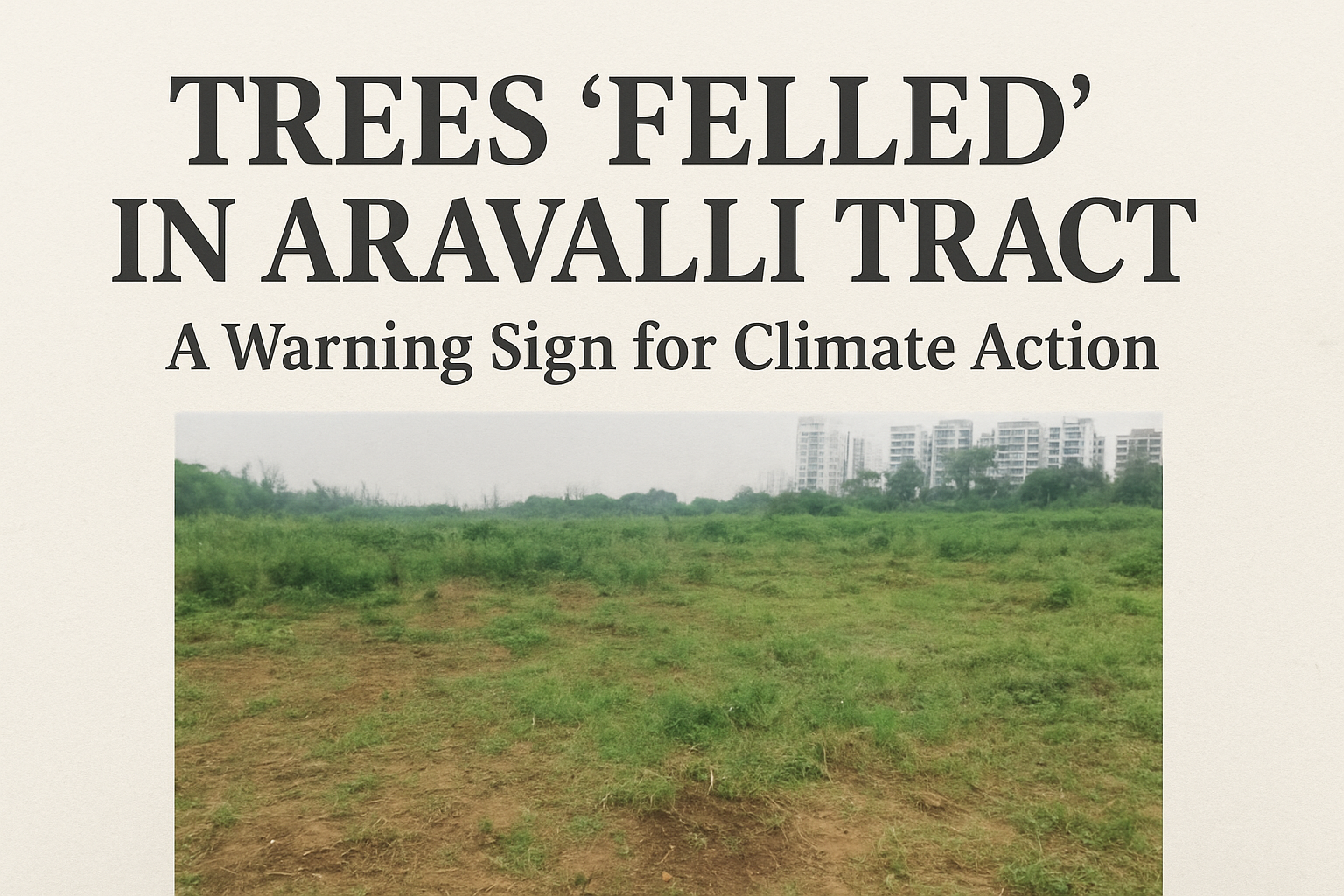
The Aravalli hills, one of the oldest mountain ranges in the world, are once again facing destruction. Environmental activists have raised alarms after large-scale cutting of trees and clearing of vegetation was reported in Sarai Khwaja village in Faridabad. This area had already been declared a "deemed forest" by the National Green Tribunal (NGT) in 2019. The complaint was filed on Saturday with the Faridabad Forest Division, bringing attention to how quickly such damage is erasing one of India’s last natural shields against climate change.
Lt Col Sarvadaman Singh Oberoi (Retd), the original petitioner before the NGT, has submitted photos and videos as proof of tree felling. He noted that thousands of trees are being cut to clear land, violating the tribunal’s orders and the very definition of a deemed forest. Oberoi highlighted that this activity comes at a time when the Haryana government has set a narrow definition of forests, which many experts believe excludes vast portions of the Aravallis from legal protection.
The divisional forest officer, Surender Dhangi, confirmed that his team rushed to the spot and stopped the clearing after receiving the complaint. However, the bigger question remains unanswered: who ordered the clearing in the first place? Until such accountability is fixed, the Aravallis remain vulnerable to exploitation.
The Aravalli range plays a crucial role in controlling climate conditions in the National Capital Region. These forests act as green lungs by absorbing carbon dioxide, providing oxygen, and replenishing groundwater. They also shield Delhi and surrounding areas from desertification by halting the spread of the Thar Desert. Cutting trees here not only worsens air pollution but also weakens the ecological balance in one of India’s most densely populated regions.
The NGT’s earlier ruling in 2019 was already a significant step in protecting these forests. Yet history shows repeated attempts to dilute such orders. For instance, in 2017, Haryana permitted the felling of over 7,000 trees, including species like mesquite and axe wood, which were later challenged in court. Each case highlights the struggle between short-term development projects and long-term ecological survival.
Climate change is not an abstract idea for India. Rising temperatures, deadly floods, erratic monsoons, and choking pollution are daily realities. The destruction of the Aravallis is directly linked to these problems. Without tree cover, urban heat will intensify, rainfall patterns will become more unpredictable, and water scarcity will worsen.
The issue in Faridabad is not just about a patch of land. It is about whether citizens and governments are willing to act responsibly to save the natural heritage that sustains life. Cutting forests for real estate or industrial expansion may bring temporary profit, but the long-term cost will be borne by future generations in the form of unlivable cities and climate disasters.
The public must now demand stricter enforcement of environmental laws, greater accountability for violations, and stronger definitions of forests that leave no room for manipulation. Every tree lost in the Aravallis is a step closer to a hotter, drier, and more polluted future. Protecting these forests is not charity for nature but a necessity for human survival.





















